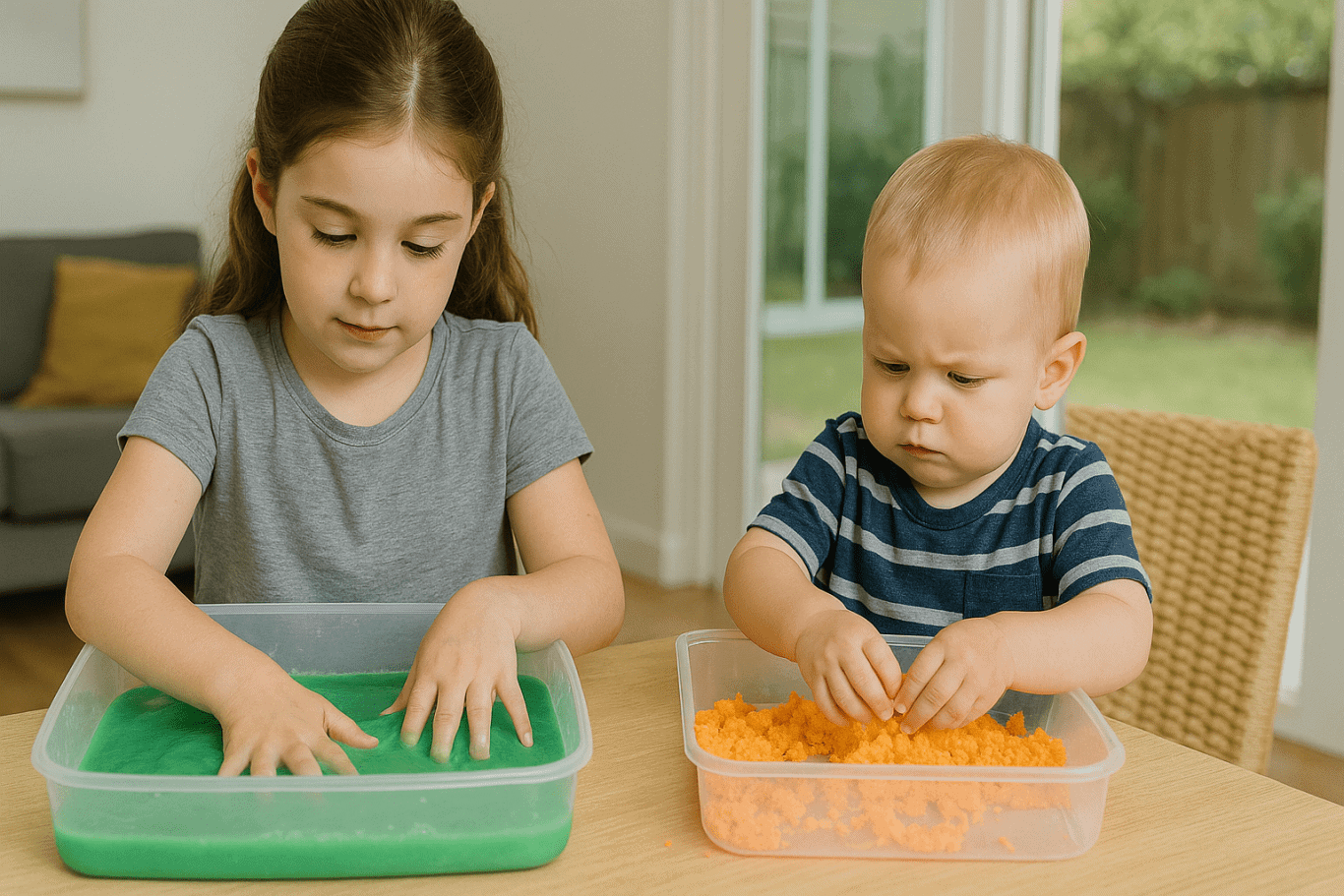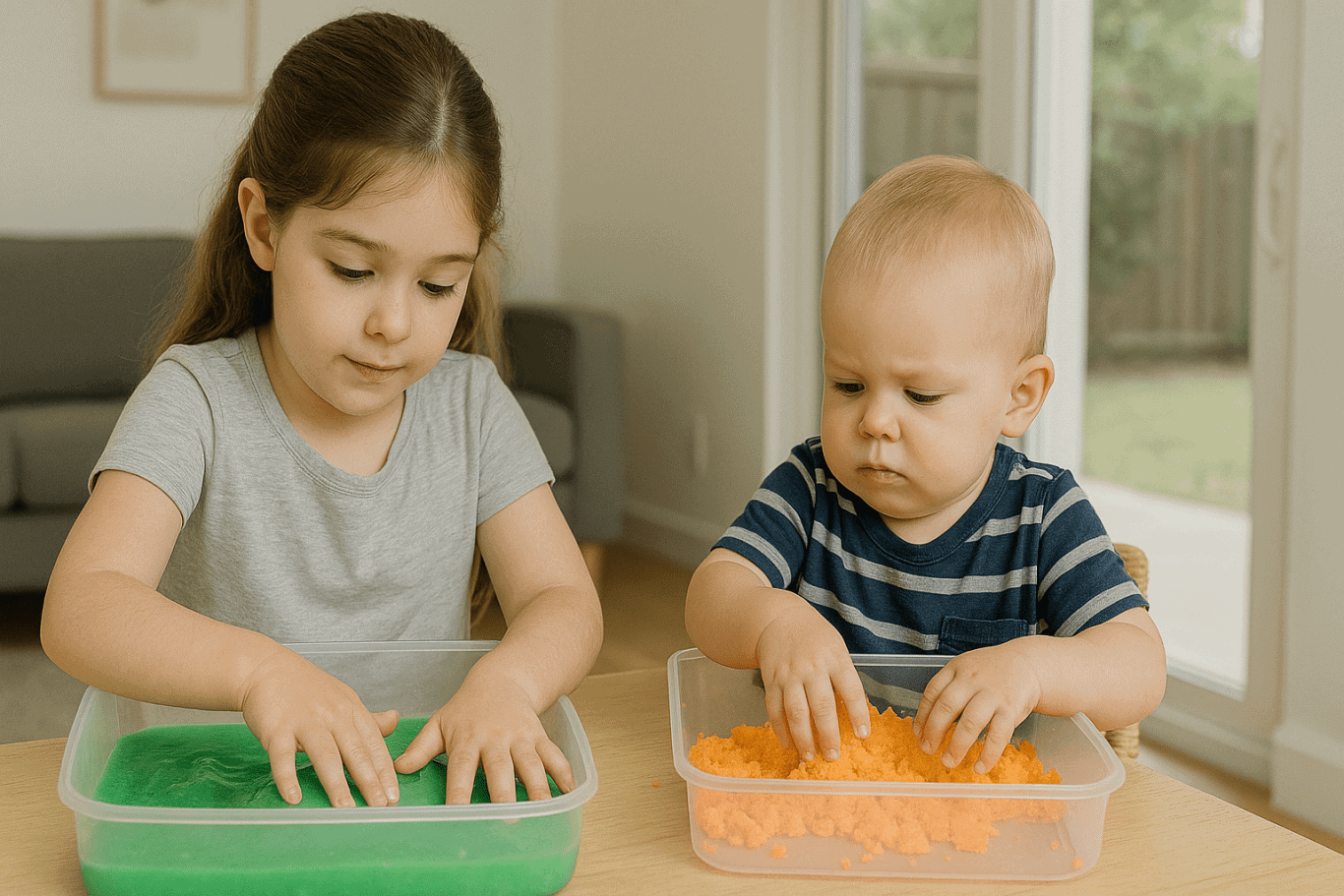10 Best Sensory Play Ideas for Kids in 2025
Sensory play for kids is a powerful way to support their motor, cognitive, and emotional development. Through hands-on sensory experiences, children explore textures, colors, sounds, and smells in a fun and educational way. Many parents are now looking for sensory activities that are easy to create at home using simple materials.
In this article, you’ll discover 10 of the best sensory play ideas that are simple, effective, and perfect for kids aged 2 to 6. These activities help spark creativity while allowing children to engage with their surroundings using multiple senses.
10 Best Sensory Play Ideas for Kids in 2025

1. Dry and Wet Sand Play
Fill a large container with dry sand on one side and damp sand on the other. Let children dig, scoop, and build. This classic activity provides textural contrast and is a great form of sensory play for kids.
2. Glitter Bottles
Combine water, glitter, and a few drops of baby oil in a clear bottle. Shake and watch the glitter move slowly. This is a calming visual tool that supports focus and mindfulness.
3. Colored Flour Bin
Mix flour with different food colorings. Kids can stir, shape, and play with the textures and colors. It’s a simple way to introduce creativity and fine motor skills.
4. Texture Board
Attach materials like velvet, cotton, bubble wrap, and sponge to a board. Kids can explore by touching and describing the textures. This supports descriptive language and sensory curiosity.
5. Frozen Fruit Cubes
Freeze fruit pieces or colored water in small molds. Children can feel and taste the cubes as they melt. This is a cold, exciting, and safe sensory experience.
6. Soapy Swirl Mats
Use a waterproof mat and add soapy water. Kids can use plastic tools to swirl, cut, and push bubbles around. This offers tactile fun with minimal mess.
7. Scented Dough
Create homemade dough with added scents like vanilla or mint. Let kids shape the dough while enjoying the soothing smells. It’s one of the most engaging types of sensory play for kids.
8. Mystery Smell Boxes
Fill small boxes with items like coffee grounds, orange peels, or herbs. Let kids sniff and guess what’s inside. This builds their sense of smell and memory.
9. Magnetic Object Play
Create a station with small metal objects and let children use magnets to move them. It combines touch with basic science exploration.
10. Vegetable Mud
Mix vegetable peels with water and soil in a bin. Kids can squeeze and scoop the mixture. It’s messy, fun, and encourages curiosity through texture.
Tips to Maximize Sensory Play

Use a variety of senses
Great sensory play for kids should involve at least two senses, such as sight and touch or smell and hearing.
Keep it safe
Always use safe, non-toxic, and age-appropriate materials. Supervise activities closely, especially for toddlers.
Encourage parent interaction
Join in the activities. Your presence helps guide the play while also strengthening your bond with your child.
Keep it simple to clean
Use trays or bins to contain materials and make cleanup easy. Choose washable tools and surfaces.
Adjust based on your child’s reaction
Pay attention to what your child enjoys and be flexible. Not every texture will appeal to every child, and that’s perfectly normal.
Why Sensory Play Supports Growth

Sensory play for kids isn’t just fun, it supports language, motor skills, and early problem-solving. It allows children to explore, test, and learn about their environment in a hands-on way. Over time, this strengthens their ability to concentrate, follow instructions, and express themselves clearly.
Blending Sensory with Digital Skills

Ingin tahu detail program?
Once your child is engaged in sensory play for kids, it’s a great time to introduce digital learning tools like coding. At Timedoor Academy, kids learn programming in fun and interactive ways. Coding helps build logical thinking and creativity in a digital space. Sensory activities and digital literacy together create a well-rounded foundation for your child’s future. Try a free trial class at Timedoor Academy today!